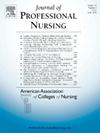了解不安全的准护士学生在临床环境中的失败现象:一个扎根的理论方法
IF 2.9
3区 医学
Q1 NURSING
引用次数: 0
摘要
不及格是指对没有达到课程或临床目标的学生给予及格分数。文献表明,由于临床评估工具和过程的主观性增加、政策不明确以及缺乏对不及格学生的行政支持等几个问题,这种现象在临床环境中发生得更频繁。问题仍然存在:教师是用什么思维过程来决定学生在临床经验中是及格还是不及格?目的探讨临床护理师在决定是否通过不安全学生注册临床课程时的决策过程。方法选择定性建构主义扎根理论设计。扎根理论探讨的是一个鲜为人知的过程。教师用来决定学生是否通过临床课程的决策过程从未在文献中描述过。参与者是来自美国10个国家的16名获得准学士学位、文凭和学士学位课程的临床护理教师。参与者是从多个Facebook护士教育网站和宾夕法尼亚州西部的一组文凭课程中招募的。每个潜在的参与者都有一个研究链接和同意书。在签署同意书并提供联系信息后,研究者联系了教师。对每位参与者进行了两次半结构化访谈。用SPSS version 26、NVivo Pro version 12对数据进行编码,并进行人工分析。结果共发现6种导致学生达到失败阈值的不安全临床行为;缺乏综合病人护理计划的能力,人际沟通无效,不可接受的技能表现模式,不尊重的心态/态度,欺骗/不道德的行为。还发现了教师不及格的六个原因;缺乏对不安全学生的行政支持,无效的临床评估工具,不一致的政策执行,时间压力,对上诉,不满和诉讼的恐惧,以及被确定为角色冲突的核心类别。行政部门缺乏支持的定义是,当提供书面文件证明学生在临床环境中明显不安全时,没有得到教员直接主管的支持。在这项研究中,管理部门拒绝让教员给不安全的学生不及格。从这些数据中产生了一个实质性的理论,并被命名为“临床评估的复杂难题”。该理论包含四个阶段:看到危险信号(识别不安全的行为),寻求验证(与管理人员会面),选择结果(通过或失败),失败到失败。结论“失败到失败”仍然是护理教育中存在的一个重要问题,它有可能危害到客户、员工、护理专业的声誉和专业。本文章由计算机程序翻译,如有差异,请以英文原文为准。
Understanding the phenomenon of failure to fail in unsafe prelicensure nursing students in the clinical setting: A grounded theory approach
Background
Failure to fail involves assigning passing grades to students who have not achieved course or clinical objectives at a satisfactory level. The literature has shown that this phenomenon occurs more frequently in the clinical setting due to several issues, including the increased subjectivity of clinical evaluation tools and processes, unclear policies, and lack of administrative support to fail students. The question remains: What is the thought process that is used by faculty to determine if a student passes or fails in a clinical experience?
Purpose
To explore the decision-making process used by pre-licensure clinical nursing faculty when they are determining whether to pass or fail an unsafe student enrolled in a clinical course.
Methods
A qualitative constructivist grounded theory design was selected. Grounded theory explores a process about which little is known. The decision-making process used by faculty to determine if a student passes or fails a clinical course has never been described in literature. Participants were sixteen prelicensure clinical nursing faculty from associate degree, diploma and baccalaureate programs located in ten United States. Participants were recruited from multiple Facebook nurse educator websites and a group of diploma programs in Western Pennsylvania. A link to the study and consent was provided to each potential participant. Following signing of the consent and providing contact information, faculty were contacted by the investigator. Two semi-structured interviews were conducted with each participant. Data was coded with SPSS version 26, NVivo Pro version 12, and analyzed manually.
Results
Six unsafe clinical behaviors that caused students to reach the failure threshold were identified; lack of ability to synthesize the client's plan of care, ineffective interpersonal communication, unacceptable pattern of skills performance, disrespectful mindset/attitude, and deceitful/amoral conduct. Six reasons for faculty failing to fail were also discovered; lack of administrative support to fail unsafe students, ineffective clinical evaluation tools, inconsistent policy enforcement, time pressures, fear of appeals, grievances and lawsuits, and the core category which was identified as role conflict. Lack of support from administration was defined as an absence of backing from the faculty member's immediate supervisor when presented with written documentation proving that a student was clearly unsafe in the clinical setting. In this study, there was a refusal by the administration to allow the faculty member to fail the unsafe student. A substantive theory emerged from the data and was entitled “The Complex Conundrum of Clinical Evaluation.” The theory contained four phases: seeing red flags (identifying the unsafe behaviors), seeking validation (meeting with administration), selecting an outcome (pass or fail), and failure to fail.
Conclusion
Failure to fail remains a significant problem in nursing education which has the potential to harm clients, staff, the reputation of the nursing program, and the profession.
求助全文
通过发布文献求助,成功后即可免费获取论文全文。
去求助
来源期刊
CiteScore
4.80
自引率
8.00%
发文量
153
审稿时长
52 days
期刊介绍:
The Journal will accept articles that focus on baccalaureate and higher degree nursing education, educational research, policy related to education, and education and practice partnerships. Reports of original work, research, reviews, insightful descriptions, and policy papers focusing on baccalaureate and graduate nursing education will be published.

 求助内容:
求助内容: 应助结果提醒方式:
应助结果提醒方式:


